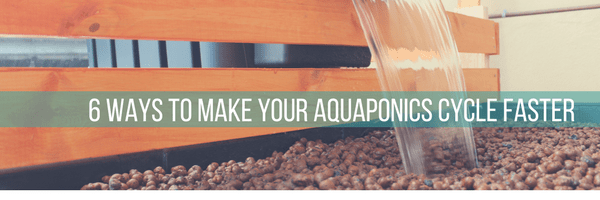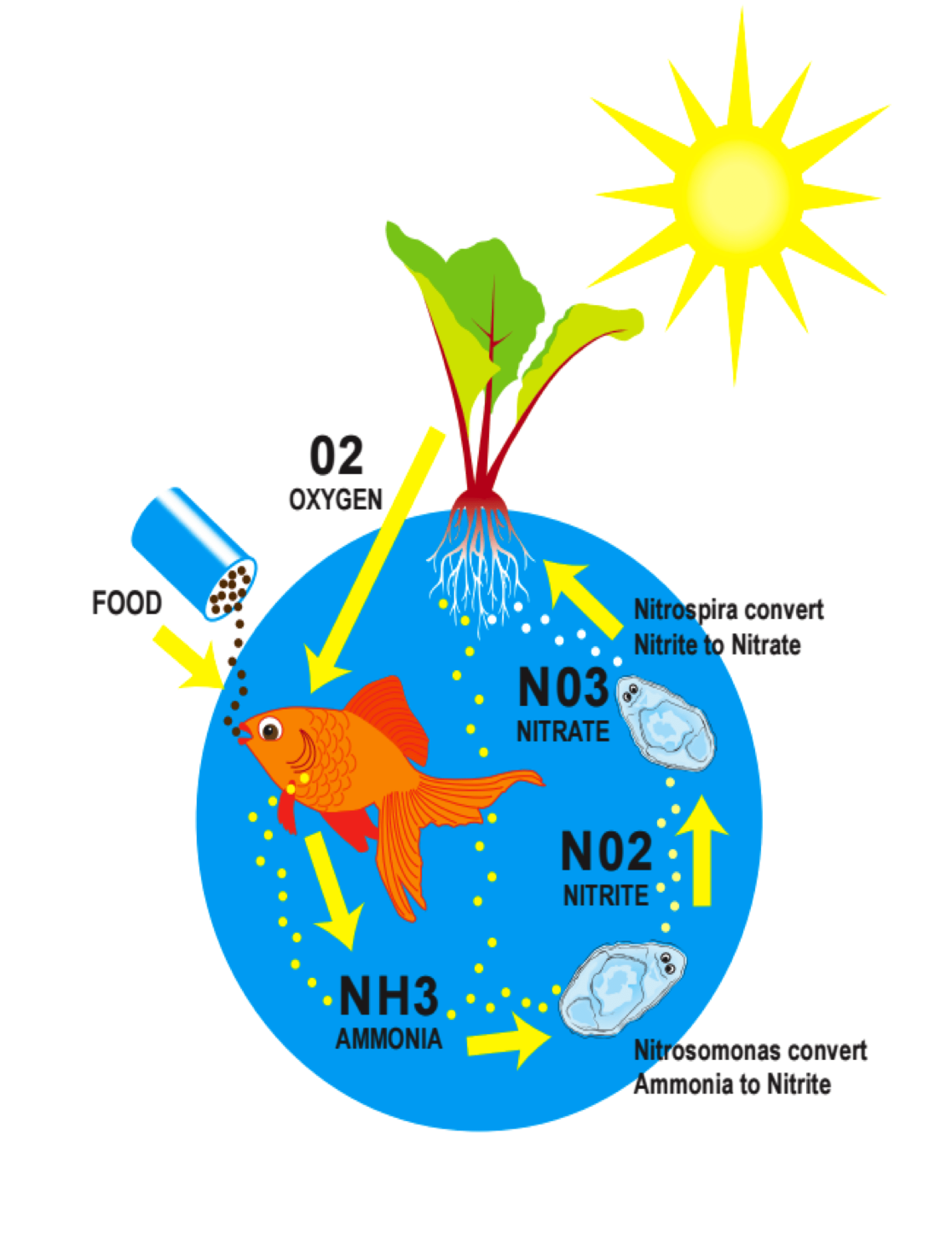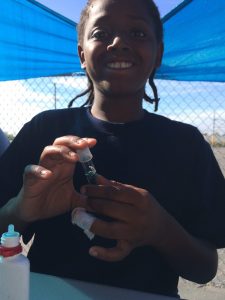6 Ways to Make Your Aquaponics System Cycle Faster


 “Cycling” can be one of the trickiest parts of setting up an aquaponics system. Cycling refers to the colonization of nitrifying bacteria in an aquaponic system to establish the nitrogen cycle. The bacteria necessary for colonization will begin to show up when ammonia is present – a process that can take up to six months! Fortunately, there are ways to help speed up the process.
“Cycling” can be one of the trickiest parts of setting up an aquaponics system. Cycling refers to the colonization of nitrifying bacteria in an aquaponic system to establish the nitrogen cycle. The bacteria necessary for colonization will begin to show up when ammonia is present – a process that can take up to six months! Fortunately, there are ways to help speed up the process.
Here are a few suggestions to get your system established and get your plants growing faster:
1. Bacteria from an Established System
We recommend using sludge from the grow media or a filter in an established system to quickly and effectively colonize a new system. It is important to ensure the borrowed bacteria comes from a healthy system because disease can easily be transferred among systems
2. Bacteria in a Bottle
Today’s market, has a promising range of effective products; the most popular being Tetra SafeStart Water Treatment, which can be found at any pet store.
3. Warm Water
 Bacteria thrive in warm conditions so trying to cycle with cold water or during the winter will extend your cycle time. For outdoor systems, heat your water or cycle during the hot summer months
Bacteria thrive in warm conditions so trying to cycle with cold water or during the winter will extend your cycle time. For outdoor systems, heat your water or cycle during the hot summer months
4. Aeration
Bacteria thrive in environments with high oxygen levels. The more oxygen a system has, the faster the bacteria colony will grow. High oxygen levels not only aid in bacterial colonization, but also keep your fish and plants happy and healthy
5. pH
Water in a new system should have a pH between 7 and 8 because ammonia (which can spike while you are cycling), will be in a form that is less toxic to fish. Once you are cycled and have successfully established bacteria, let your system’s pH naturally lower to 6 – 6.8. Lowering your pH should be done slowly and with caution, because of the risks associated with harming bacteria and fish.
6. Cycling Without Fish
While your system is cycling it can be prone to ammonia and nitrite spikes, which can harm fish. Cycling without fish can be less stressful for both you and your fish. To do this, simply add a source of ammonia, bacteria, and treated water. You can add Ammonium Chloride in very small amounts until you reach 2 to 3 mg/L (ppm) of Total Ammonia Nitrogen. Be sure to test using an API Freshwater Test Kit. Try these things out and let us know how they work for you.